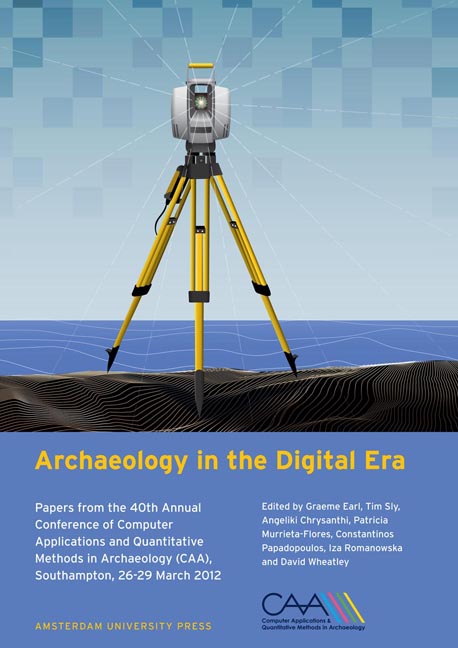 Archaeology in the Digital Era
Archaeology in the Digital Era Identifying and Tracing Archaeological Material with RFID Tags
Published online by Cambridge University Press: 16 February 2021
Summary
Abstract:
In this paper we propose to label archaeological materials with RFID (RadioFrequency IDentification) tags in order to identify them in an unambiguous way. In this way, it is possible to trace the relevant information associated to them, through all the phases of archaeological work, from fieldwork to museum storage. The system has been specifically designed to be integrated with the working procedures of the archaeological team working on the Segedaproject (Segeda 2012). This technique improves archaeological work in several ways. First, it speeds up the process of collecting, saving, updating and duplicating the data associated with every piece of material. Second, it increases the information that can be stored with the material and can be retrieved without connection to the database. Third, it reduces human error in transcribing information. Finally, RFID labelling facilitates the process of localizing stored material and controlling its movement.
Keywords:
Information Management, Traceability, Radiofrequency Information
Introduction. Traceability in the Archaeological Work
When traceability is present in a productive process, it means that, at every step in the process, information about every product is collected and attached to it without ambiguity. We know all the production parameters of a specific item or group of items and also who is responsible for this information and when and where these data were collected. This knowledge is always available because it is precisely documented.
Archaeological research is divided in several steps. It is also a chain process that, in the context we work, starts at the excavation site where the findings are unearthed. These elements are moved to the laboratory in order to be cleaned and inventoried. In the next phase, the reconstruction of ceramic pieces is addressed. These pieces must finally be catalogued and sent to a museum. At every step, archaeologists must record information about the excavated artefacts. These data must accompany the items in order to assure their provenance, control the validity of the archaeological work and conclusions, and facilitate information exchange. Traceability is essential in the work of an archaeologist, usually following a recording manual where the data to be taken, the way the items are identified and the collection protocol are precisely defined (Parks Canada 2005, 129).
- Type
- Chapter
- Information
- Archaeology in the Digital EraPapers from the 40th Annual Conference of Computer Applications and Quantitative Methods in Archaeology (CAA), Southampton, 26-29 March 2012, pp. 55 - 64Publisher: Amsterdam University PressPrint publication year: 2014
